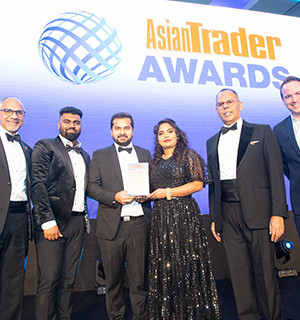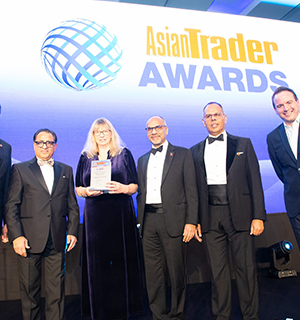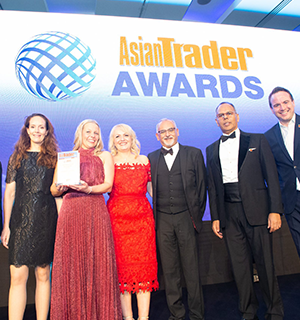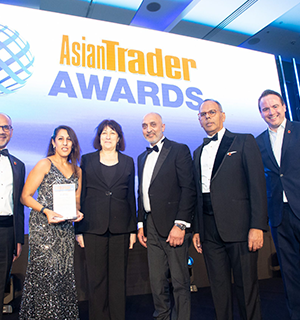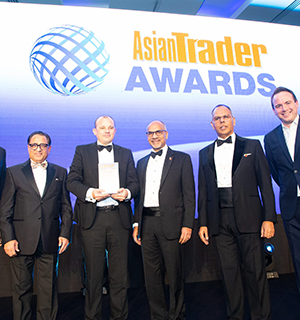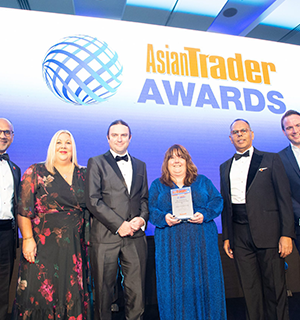Welcome to NabLab. If that doesn’t mean anything to you, don’t worry: it soon will.
We have so far had “NoLo”, meaning no- and low-alcohol drinks, and plain old “Zero”. But we predict that “NabLab” will be the trending term for the expanding universe of fantastic-tasting low alcohol beers as we head into 2021.
It is not a scientific term. It does not refer to brews cooked up in a laboratory rather than a brewery (on the contrary). It actually refers to “No Alcohol Beer/Low Alcohol Beer – NabLab, see?
Recently, as part of its annual Global Be(er) Responsible Day, Budweiser Brewing Group UK&I held a tasting seminar that your dogged reporter reluctantly attended – with the difference that this year, the only beers to be sampled were those that didn’t get you inebriated.
As the group’s Legal and Corporate Affairs Director, Timiko Cranwell, explained, every year, AB InBev colleagues from around the world get together and hold events and activities designed to promote smart drinking and reduce the harmful use of alcohol. “Together with our partners around the world, we aim to reach beer drinkers with responsible drinking messages whilst providing No and Lo alternatives,” she explains.
So, no booze as such, but get this: the event was no let-down at all.
Presenting the selection of zero brews was Annabel Smith, a long-time beer advocate and expert on all things ale who has worked in the brewing industry for 30 years, including ten years at Cask Marque where she designed training courses.

Annabel is also a member of the British Guild of beer writers and her insights into the science of NabLabs, and also her economic analysis, are most enlightening.
First, though, it is vital to point out that NabLab is a big and fast-growing category – having increased by 147 per cent since 2015, according to Nielsen. That is a 30 per cent uplift year on year.
And with lockdown, that rate of increase has only … increased, as people stuck at home began to watch their intake of alcohol and their waistline, where NabLabs also win out over regular tipples.
Could it be that the prejudices against alcohol-free are finally fading?
“A lot of this has to do with lifestyle, with dietary preference,” says Annabel. “I think some of the stigma attached to NabLabs is being removed. And one of the things we’ve got to think of, we who work in this industry, is making sure that retailers are reacting to this demand.”
Even the major supermarkets at the present moment tend to stock only two or three brands of low- and no-alcohol beers. Independent stores can sometimes put the multiples to shame with their wide ranges of obscure and exotic labels boasting less than half a per cent alcohol.
But in the symbols and convenience chains, the two- or three-brand choice remains sadly typical.
Even with the growth of online delivery, multiples seem not to be taking advantage of the burgeoning NabLab market. Waitrose Cellar, for example, lists just two no-alcohol beers, both bottles, and both labels unknown to the British public at large.
There is a huge retail opportunity here for independents to lock themselves into a profitable and fast-growing sales opportunity.
“There are some publicans and retailers who still have misplaced perceptions,” says Annabel.“They think, ‘No, I’m not going to stock a range of NabLab beers because it’s too niche. I don’t think they’ll sell.’ Well, they won’t sell if they don’t stock them. And this is why having an actual choice of NabLab beers is a commercial opportunity for them.”
But in the end it’s all down to flavour. Without it, NabLab is going nowhere.
A flavour revolution
The tasting session Annabel is hosting is showcasing not just the improved flavour and mouth-feel of NabLabs, but also the range and variety now available to retailers if they are smart and interested in growing their sales in the category.
The beers – obviously all from the Budweiser Brewing Group stable – offer a zingy and lemony Bud Zero and a Stella Artois 0.0 in a sharper pilsner style – but also a dark, fruity Leffe Bruin (brown) and its Blond sister, that frankly are now indistinguishable from the “full-fat” 6per cent ABV versions. And of course there is Beck’s Blue, still the standard, which started the NabLab revolution and has been around since 1993!

All the same, the range available from Budweiser just goes to show how traditional or conventional beer as a whole is finally being mirrored in the NabLab offer.
Brewdog, for example, do a fabulously hoppy version of their Punk IPA – Punk AF (for “Alcohol Free”) and last week Guinness announced that it would be launching its first ever Guinness 0.0, meaning that stout has now joined the Avengers team of alcohol-free refreshment. In other words, almost any beer preference can now be accommodated in the NabLab world.
It is quite a transformation, and Annabel explains how the improvements in technology have elevated the zero beers to be on par with their full-fat doubles.
“Historically, what we used to do was brew a beer to its original strength and then, to get rid of the alcohol, heat the beer up,” she says. “Because alcohol has a lower boiling point than water, all the alcohol boils off into the atmosphere and what you’re left with is an alcohol-free beer. One of the issues with doing that, is you massively affect the flavour.”
Beer produced that way could have a “cooked” taste. That’s not desirable in a beer at all, Annabel says, and so over the last 20 years, the methods for producing alcohol-free beers have undergone enormous innovations.
“Now there are about eight or nine different ways of producing alcohol-free,” she continues. “Other than heating it up, one of them is vacuum distilling, which is where you lower the boiling point of the alcohol. So you kind of distil the alcohol off, but you’re left with all of the flavours in the beer. But that’s a really, really expensive process.
“What a lot of brewers are moving towards now is something called ‘reverse osmosis’. What a brewer will do is brew a beer to the original strength. Then they will pass the water and the alcohol through a very, very fine membrane. And what it leaves behind is kind of the essence of the beer. It’s almost like a stock cube with all the flavours concentrated in there. And then what happens on the other side of the membrane is you heat that water and alcohol up. All the alcohol dissipates into the atmosphere. And then you pass the water back through the membrane into the beer. So you still have all of the flavours not having heated the actual ‘stock cube’ up at all, and you get a really full flavoured beer.”
Annabel says that reverse osmosis has been around for perhaps 20-25 years. As with any new innovation, it was a very expensive process to start off with. But the more brewersdeploy the technology, the more that the cost of the process comes down. Which is what’s happening now.
Battle up for NabLab
It’s a big risk for a retailer with limited shelf or chiller space to swap out tried and tested sellers for skus that she suspects drinkers might turn their noses up at.
But Annabel says that the time is right to go against that cautious instinct, because a new market demand is opening up and this is the moment to take advantage of it.
“There’s lots of ale NabLabs, lager NabLabs, NabLabs that are also wild and sour, and no and low cold beers out there. We need to go out and experiment, we need to get rid of some of these pain points, we need to dispel some of the myths about low alcohol beers with retailers, because this very definitely is going to be a big sector, the market is going up,” says Annabel.
“I want to give you a little bit of thought about why a retailer should consider having a range of no and low alcohol beers, other than the fact that it makes commercial sense at this point in time,” she goes on.
“NabLabs used to be a distress purchase, usually for a designated driver. And it was the poor guy or poor girl who was driving who had to drink a no- or low-alcohol beer. But actually, it’s going to be that designated driver who dictates the pub of choice that a group of people go to. And if that bar or restaurant stocks a decent range – and by range, I mean a different range of flavours and styles of no- and low-alcohol beers – that designated driver is going to want to go there because she knows she is going to get the same choice as the beer drinkers, gin drinkers or wine drinkers.”
This is important: it is what is known as the minority rule – the reason almost all supermarket chicken is Halal and all lemonade Kosher. The majority doesn’t know or mind, but the minority is catered for and taken care of. You make sales to both groups.
“So by stocking a range,” says Annabel, “it improves the retailer’s overall profitability because it’s bringing groups of people in and you’re actually catering to that 19 per cent of the population who claim they are teetotal.”
That’s right: nearly one-fifth of the population – and that means a disproportionate number of “Millennials” – claim they don’t drink alcohol.
“But when you start unpacking that,” Annabel says, “it’s not that the 19 per cent don’t like the taste of alcohol, they are just doing this as a lifestyle choice or as a dietary preference.”
So although they might not want alcohol, they could well be happy to drink NabLabs, which is something the brewers are acutely aware of and are planning for accordingly: by 2025 20 per cent of Budweiser Brewing Group’s whole pot global beer volume will be no- and lower-alcohol beers. “That’s huge and it shows that they know that this is a trend that is not going to go away.”
Next steps
The brewers are stepping up in their efforts to spread more widely the NabLab gospel.
“We are seeing these beers more and more in our convenience stores and that’s part of the reason that we want to offer so much choice, because we know that people in the past have had a hard time finding niche no- and low-alcohol beers at their local shop,” says Maeve Atkins, the External Communications Manager at Budweiser Brewing Group UK&I.
“We’re doing a couple specific initiatives with some independent retail stores, for instance Co-op, to offer meal deals that would include beer and a pizza for x price and the beer could either be Budweiser or Budweiser Zero. And then we provide things like category stats to our convenience customers, so we can say we have seen that Stella Artois alcohol-free does better when it’s placed next to Stella Artois standard or is placed next to the lovely foods that it goes with. So that’s the kind of initiative we’re taking with our retail customers.”
Maeve explains that the strategy of product promotion is integrated with training of reps and education of the consumer.
“Account teams get regular training and the sales team have been avid participants in all of the events that we’ve had this week. But actually throughout the year there’s training on products and also on things like behavioural change. And we do awareness campaigns to reach people directly through social media.”
NabLabs are now all available in bottles and some in cans, but draught NabLab beer is currently still beyond the zero-point horizon, and progress has not been helped by the lockdown, which has ruined the on-trade for the foreseeable future. But that is good news for the off-trade, which can capitalise on the thirst for non-intoxicating beer that pubs cannot yet supply in a readier form.
In the meantime the brewers could surely up their game and encourage the market for NabLabs in a couple of very simple ways.
First of all, you can buy NabLabs by some strange manufacturer’s consent only in small bottles or 330ml cans – a unit that suits the non-drinker but perhaps not the accustomed ale-quaffer. Why not allow 440 ml cans just like normal beers come in as standard? Why not 500ml cans, in which regular Stella is everywhere available?

It is surely an assumption and a prejudice that NabLab drinkers want less liquid because they want less alcohol in the liquid. That ain’t necessarily so. They might even drink more, with no hangover concerns – and far fewer calories.
Secondly, the market is possibly being constrained from absolutely stellar growth by the price of zero beers, which match or outstrip their full-fat ABV compatriots. It may be true that the brewing process, involving an extra step or two, is more expensive for alcohol-free brews. Nevertheless, zero beers do not suffer onerous sin taxes and duties that can account for much of the retail price of alcoholic drinks.
There is noreal incentive for brewers to make their NabLab versions beatalcoholic brands on price, while they are making outsize profits. And of course, there is nothing wrong with that in business terms: 147 per cent growth in five years is testament to demand holding up at those price-points.
But if the price was dropped and real differentiation introduced, the NabLab market would instantly become clearly defined and its attractions more visible. Then the category could really explode, with margins easily maintained for retailers and profits held up for brewers by increases in sales volumes.
In the end, alcohol is one of the great consolations of life. But now, NabLabs are in the position to offer the emotional comforts of beer without the physical downside – either in terms of hangover, physical dependency or weight-gain.
Annabel quotes something that drinks journalist Richard Godwin recently wrote: “What low- or no- alcohol does is strike a balance between health and well-being while allowing us to enjoy small luxuries like beer at the end of the day.”
Many dedicated beer-drinkers have been doing this for months now during lockdown: waking up the next day after a night on the NabLab clear-headed, losing weight, and not feeling as if they are missing anything at all. That has to be a winner.







 To use this website you must be aged 18 years or over. Please verify your age before entering the site.
To use this website you must be aged 18 years or over. Please verify your age before entering the site.


